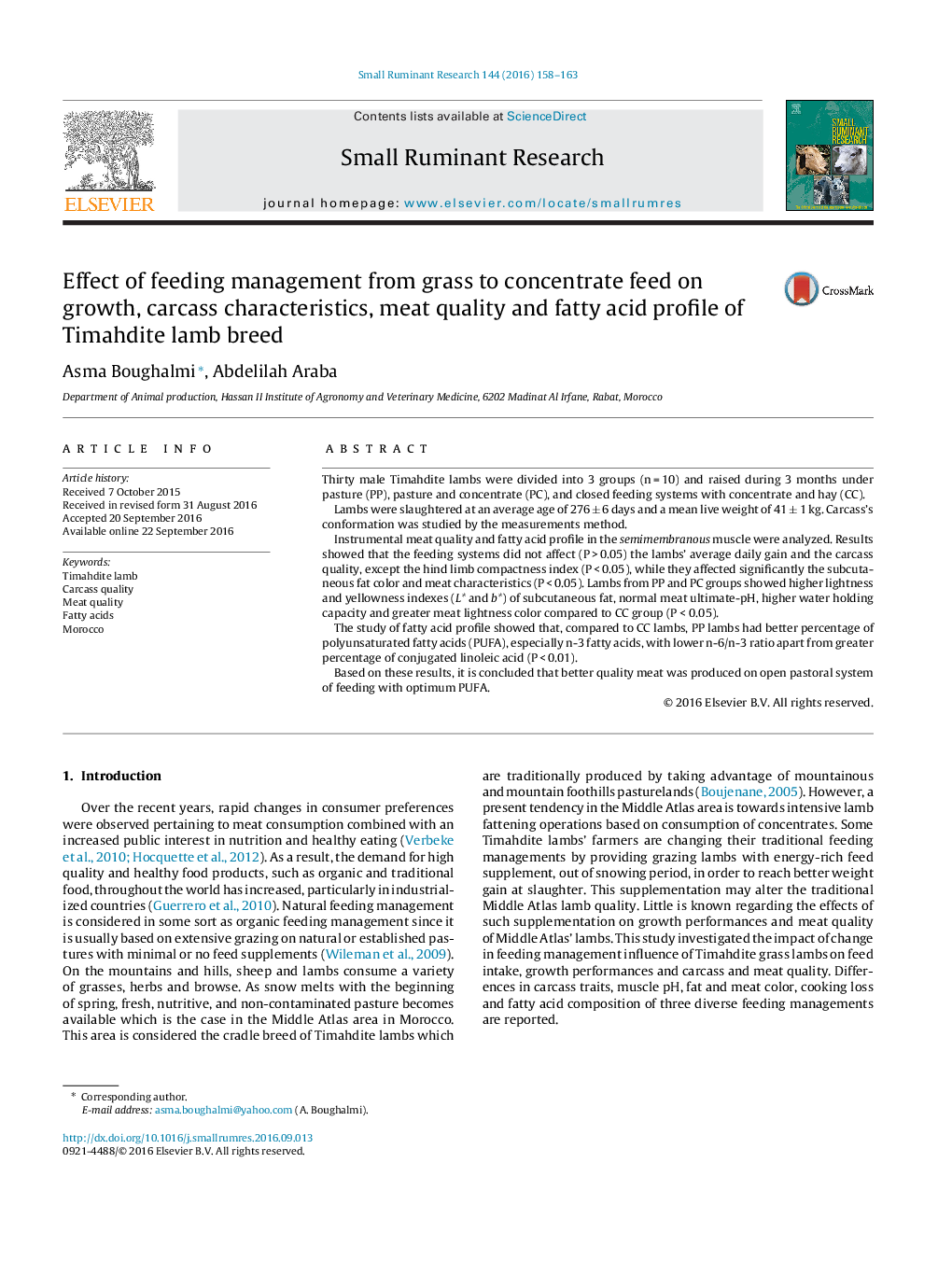| Article ID | Journal | Published Year | Pages | File Type |
|---|---|---|---|---|
| 5795312 | Small Ruminant Research | 2016 | 6 Pages |
â¢We compare carcass and meat quality of Timahdite lambs.â¢Lambs were raised under grass (PP), mixed (PC) and concentrate (CC) feeding systems.â¢Despite their low DMI, CC lambs presented better ADG and SLW than the grazing lambs.â¢PP and PC lambs showed better instrumental meat quality than CC lambs.â¢They had important percentage of PUFA and greater percentage of CLA than CC lambs.
Thirty male Timahdite lambs were divided into 3 groups (n = 10) and raised during 3 months under pasture (PP), pasture and concentrate (PC), and closed feeding systems with concentrate and hay (CC).Lambs were slaughtered at an average age of 276 ± 6 days and a mean live weight of 41 ± 1 kg. Carcass's conformation was studied by the measurements method.Instrumental meat quality and fatty acid profile in the semimembranous muscle were analyzed. Results showed that the feeding systems did not affect (P > 0.05) the lambs' average daily gain and the carcass quality, except the hind limb compactness index (P < 0.05), while they affected significantly the subcutaneous fat color and meat characteristics (P < 0.05). Lambs from PP and PC groups showed higher lightness and yellowness indexes (L* and b*) of subcutaneous fat, normal meat ultimate-pH, higher water holding capacity and greater meat lightness color compared to CC group (P < 0.05).The study of fatty acid profile showed that, compared to CC lambs, PP lambs had better percentage of polyunsaturated fatty acids (PUFA), especially n-3 fatty acids, with lower n-6/n-3 ratio apart from greater percentage of conjugated linoleic acid (P < 0.01).Based on these results, it is concluded that better quality meat was produced on open pastoral system of feeding with optimum PUFA.
